Most mistakes by the superior side in queen vs. pawn endgames do not occur in the theoretically important positions with the pawn on the 7th rank that are the focus of endgame books. Rather, they occur with the pawn on the 6th rank. Such was my conclusion from a brief analysis of games in the Chessbase Mega Database from 2019 to the present. [For those interested in the analysis supporting this conclusion, see the note on methodology at the end of this post.] There are many reasons for errors in these positions, but an important and surprising one is that amateurs fail to consider a simple, but key, principal of queen vs. pawn endgames. What is it? The side with the queen wins if it can get its queen in front of the pawn. Simple stuff, but endgame books don't mention it or only do so in passing probably because the titled players who write them consider the point to be trivial. Trivial it might be, but points are lost by many amateurs because this principal is ignored. Let me explain this and the other errors that amateurs commonly make in these endings. First some basic endgame theory.
As is well known, the side with the pawn in a queen and pawn endgame can draw if the pawn is a rook or bishop pawn on the 7th rank and supported by the king on the 7th or 8th rank, and the opposing side's king is not too close. I'm not going into the analysis here as all endgame books cover it, but the basic ideas are as follows. In these queen vs pawn endgames the side with the queen wins by repeatedly forcing the opponent's king directly in front of the pawn, which gains it a tempo to advance his king forward. Once the king is close enough the opponent's pawn is taken or his king checkmated. For example, in the following position after black plays Qd6+, white must play Ke8 or lose the pawn and this allows the black king to advance.
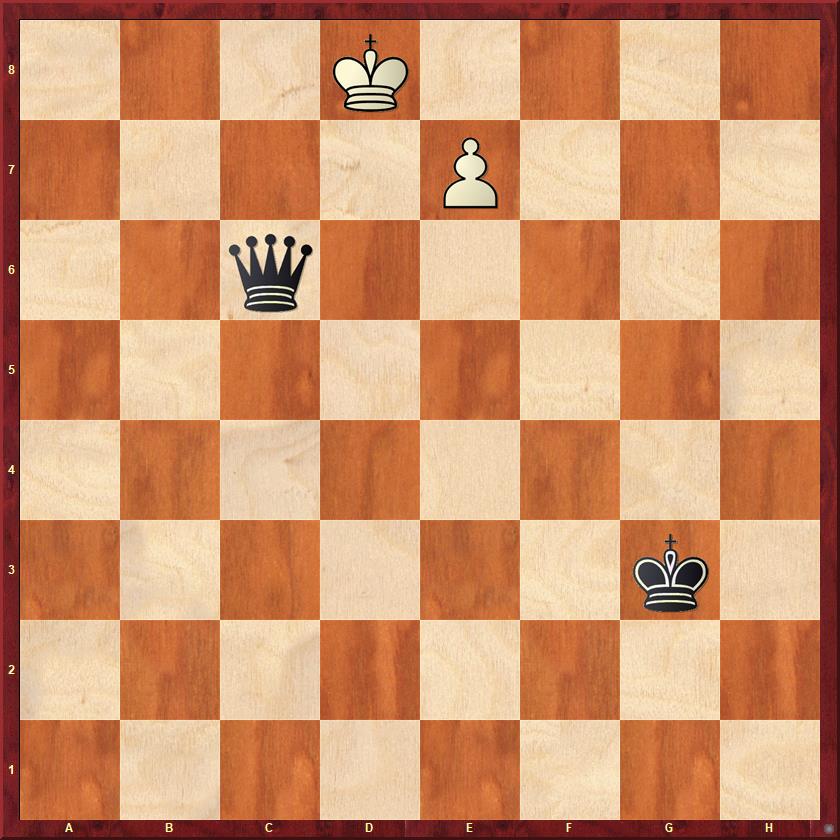
In the case of rook and bishop pawns this does not work. When there is a rook pawn, the defending side has a stalemate defense as in the following case where black has forced white's king in front of his pawn, but can't advance his king as it would be stalemate. There is no way around this, and the position is drawn with correct play.
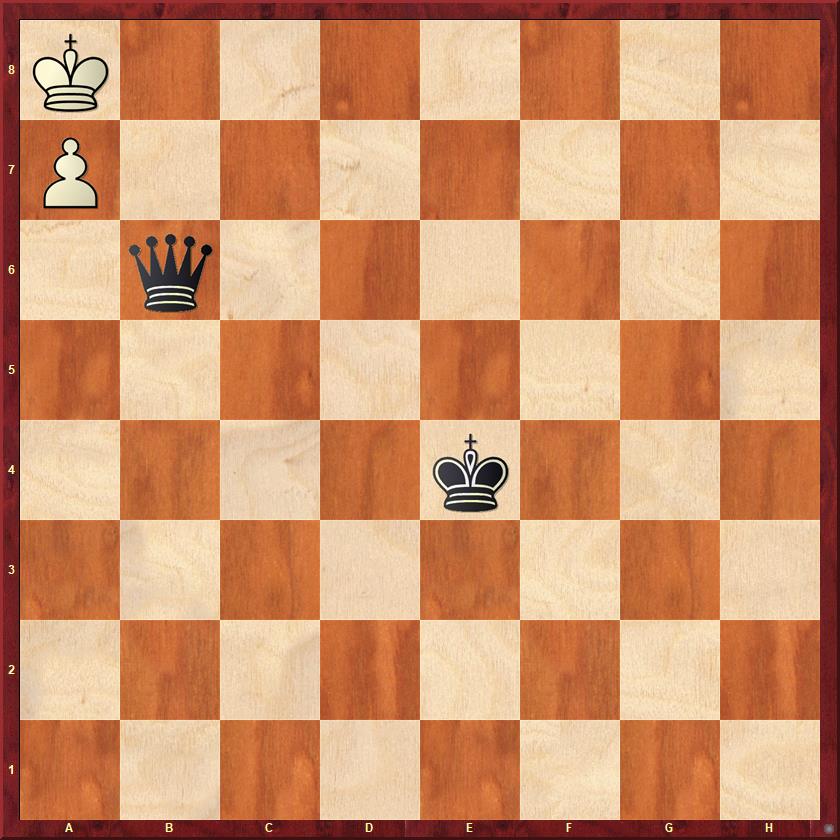 I saw "with correct play" because white can lose if he stops thinking. There are several examples in the database of helpmates such as 1...Qc6+ 2. Kb7, Qd7+ 3. Ka8, Qc8#.
I saw "with correct play" because white can lose if he stops thinking. There are several examples in the database of helpmates such as 1...Qc6+ 2. Kb7, Qd7+ 3. Ka8, Qc8#.
In the case of bishop pawns, the stalemate trick is simply to put the king in the corner so that it is stalemate if the queen takes the pawn. Thus, in the following diagram, white should play Ka8 and black can't make progress.
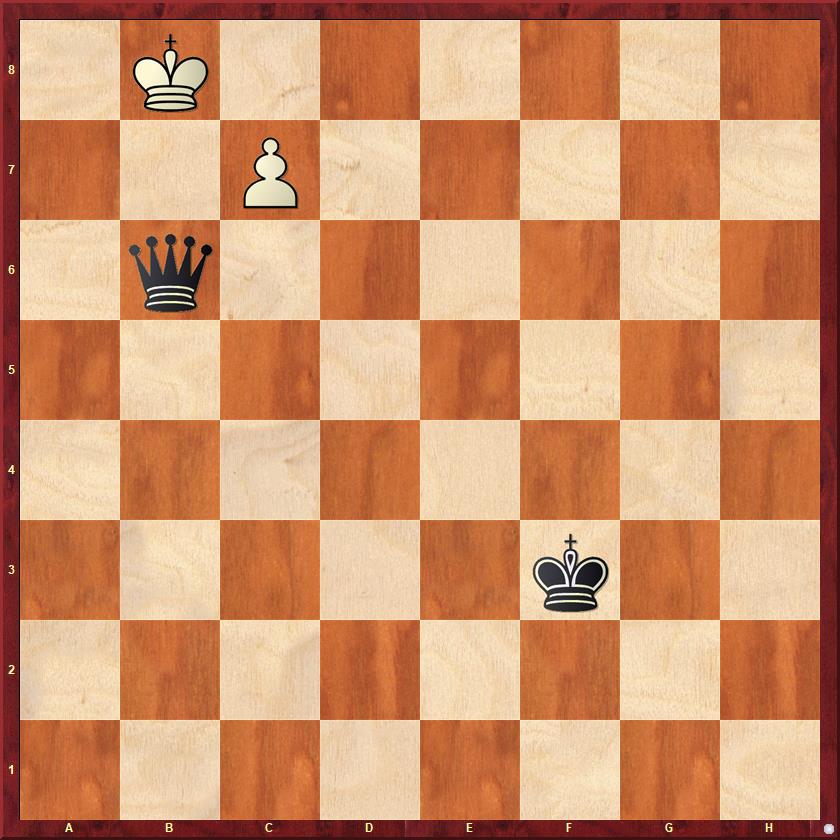 Now, if the rook or bishop pawn is on the 6th rank, then the side with the Queen is winning in most positions. For bishop pawns the ordinary strategy is the same as that applied to to b, d, e, and g pawns that are on the 7th rank: repeatedly check the king until he has been forced directly in front of the pawn, allowing the side with the queen to advance his king. Sometimes, though, this is not possible and there are only two alternative ways to make progress that are often overlooked by amateurs: pin the pawn to the king or move the queen in front of the pawn. Whatever happens the side with the queen must not allow the pawn to advance to the 7th rank. For example, in the following position black makes progress with 1...Qb5+ 2.Kc7, Ke4.
Now, if the rook or bishop pawn is on the 6th rank, then the side with the Queen is winning in most positions. For bishop pawns the ordinary strategy is the same as that applied to to b, d, e, and g pawns that are on the 7th rank: repeatedly check the king until he has been forced directly in front of the pawn, allowing the side with the queen to advance his king. Sometimes, though, this is not possible and there are only two alternative ways to make progress that are often overlooked by amateurs: pin the pawn to the king or move the queen in front of the pawn. Whatever happens the side with the queen must not allow the pawn to advance to the 7th rank. For example, in the following position black makes progress with 1...Qb5+ 2.Kc7, Ke4.
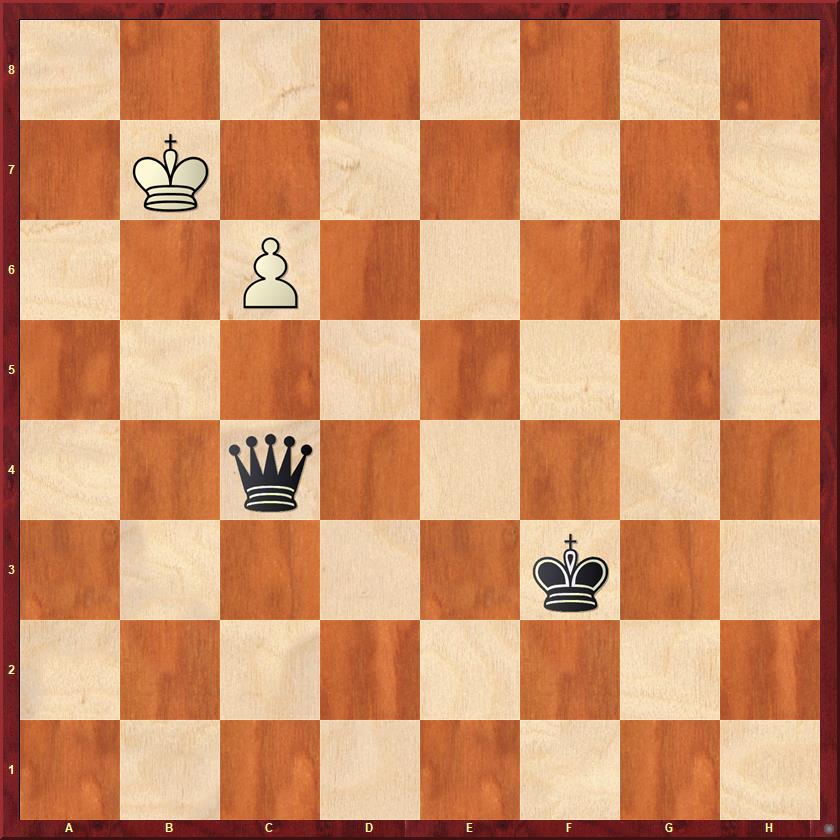 But at times the solution is not so trivial. In the following position, white has no checks and only one winning move: 1.Qa8!
But at times the solution is not so trivial. In the following position, white has no checks and only one winning move: 1.Qa8!
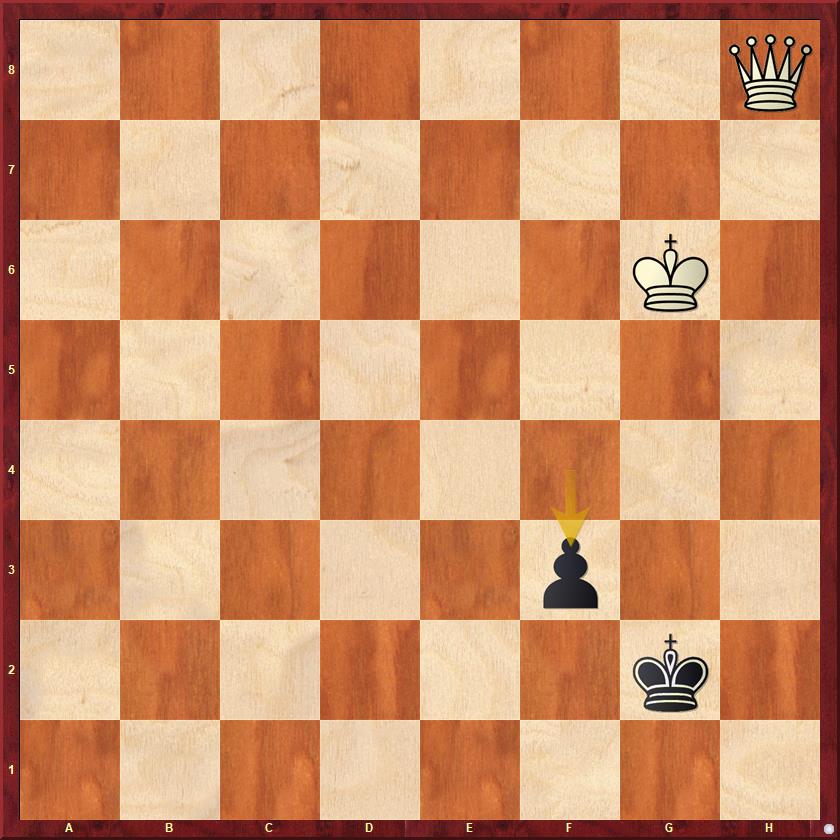 1. Qa8 pins the pawn. After the black king moves out of the pin, white proceeds with checks that advance his Queen closer to the king and ultimately forces it in front of his pawn.
1. Qa8 pins the pawn. After the black king moves out of the pin, white proceeds with checks that advance his Queen closer to the king and ultimately forces it in front of his pawn.
At times checks don't seem to work as in the following example, where the side with the queen ultimately allowed white to draw because his Qg4+ was met with Kf8 and his Qc8+ was met with Kg7. Instead, black needed to play 1...Qc3 using the pin. Then, if white plays 2. Kg6 black advances his king as 3. g7 is met by 3...Qh8, after which the queen is in front of the pawn.
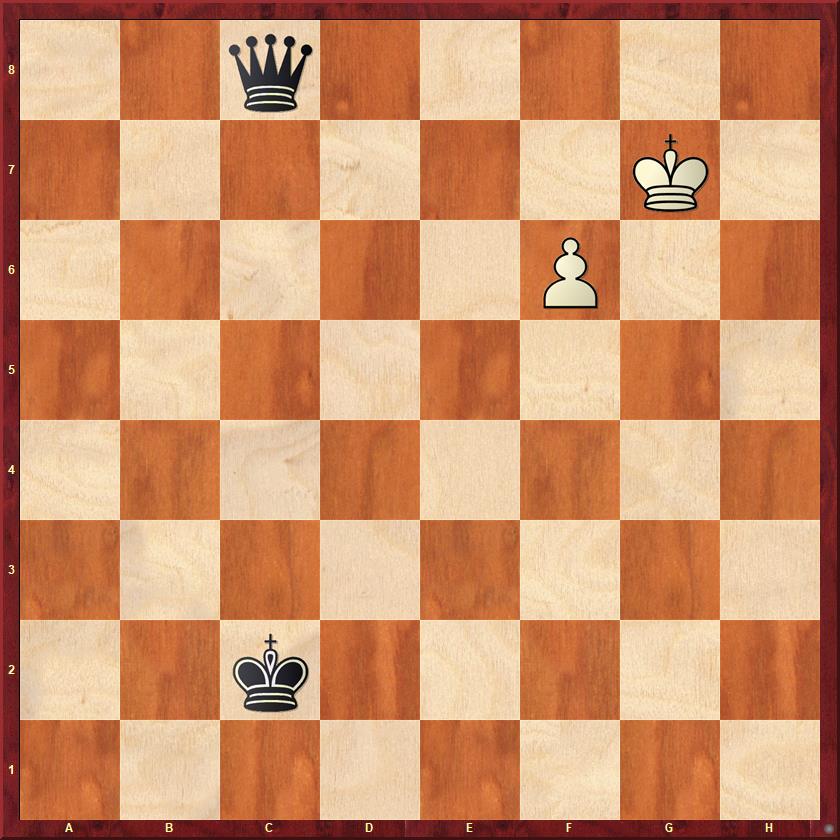 This idea of putting the queen in front of the pawn often works in cases where a rook or bishop pawn is on the 7th rank but its supporting king is on the 6th rank. Many players miss this opportunity. For example, in the following case, 1. Qb7+ followed by 2. Qh1 is the only way to win.
This idea of putting the queen in front of the pawn often works in cases where a rook or bishop pawn is on the 7th rank but its supporting king is on the 6th rank. Many players miss this opportunity. For example, in the following case, 1. Qb7+ followed by 2. Qh1 is the only way to win.
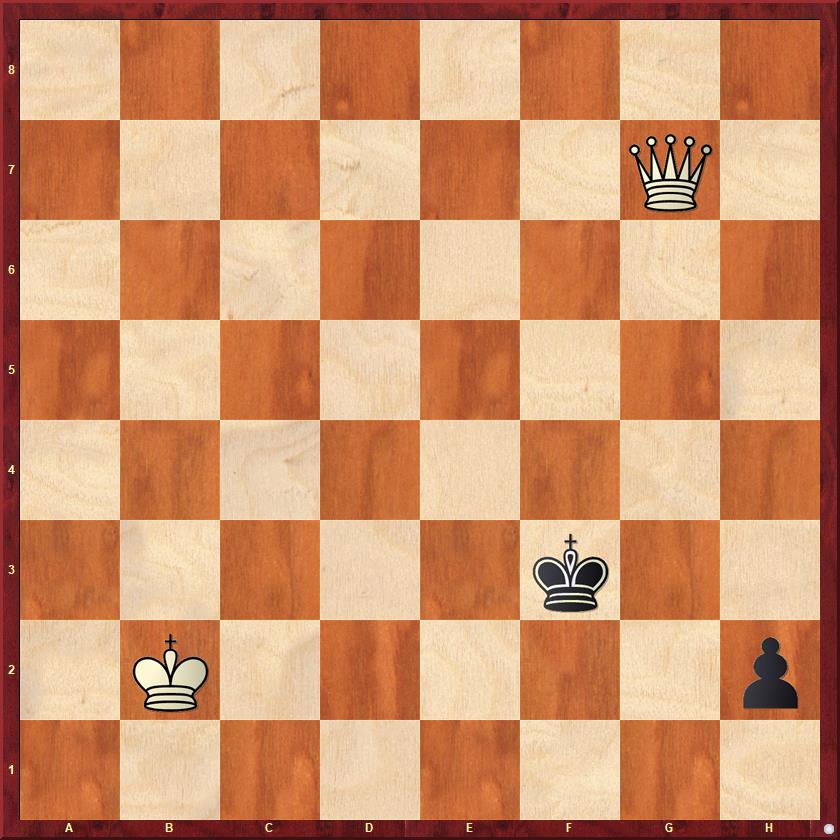 In the following position 1.Qh6 wins clearly and is the only winning move.
In the following position 1.Qh6 wins clearly and is the only winning move.
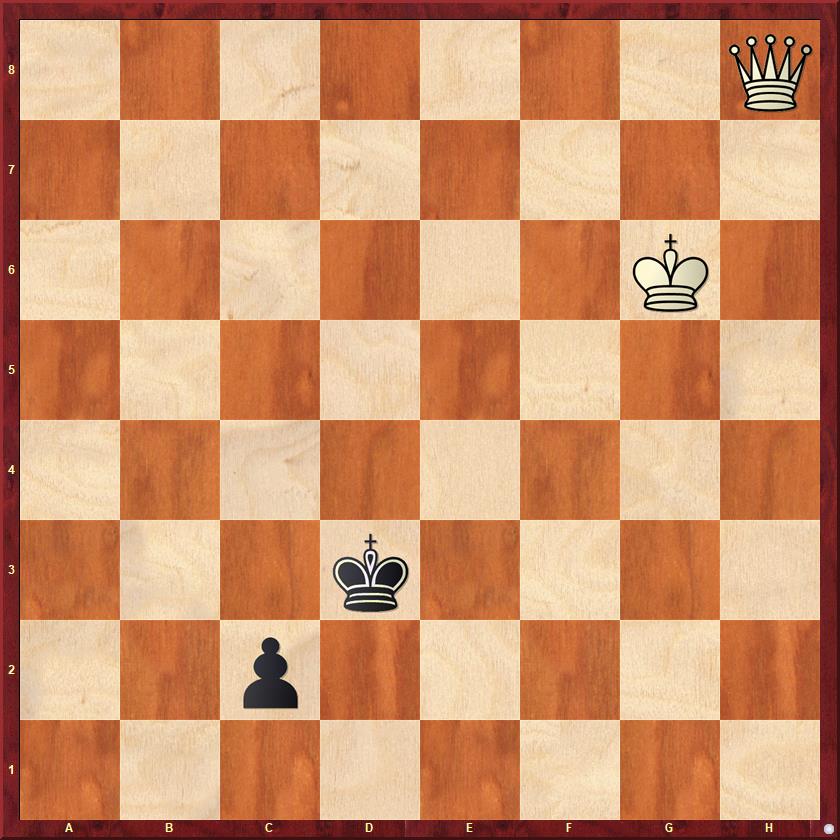 A more complicated and beautiful example of this is the following position in which the white player rated over 2300 missed the winning idea: 1. Qh2! (if 1...c1=Q then 2.Qh6+), 1...Kd3 2. Qf4!
A more complicated and beautiful example of this is the following position in which the white player rated over 2300 missed the winning idea: 1. Qh2! (if 1...c1=Q then 2.Qh6+), 1...Kd3 2. Qf4!
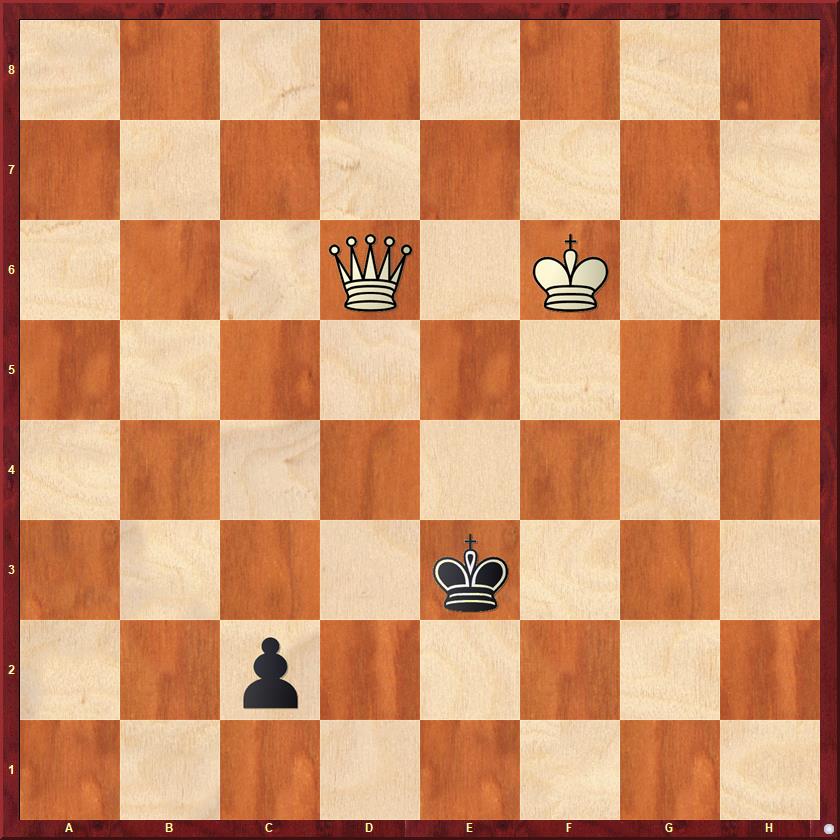 Finally, a word about Queen vs. rook pawns on the 6th rank. Many amateurs are unable to win this. The winning idea is simple once you know it. It is to check the king until you get the following position. If it is black to move, he just moves his king, effectively giving the move to white who is in Zugzwang as white's only move is Kh8 after which he loses the pawn and the game.
Finally, a word about Queen vs. rook pawns on the 6th rank. Many amateurs are unable to win this. The winning idea is simple once you know it. It is to check the king until you get the following position. If it is black to move, he just moves his king, effectively giving the move to white who is in Zugzwang as white's only move is Kh8 after which he loses the pawn and the game.
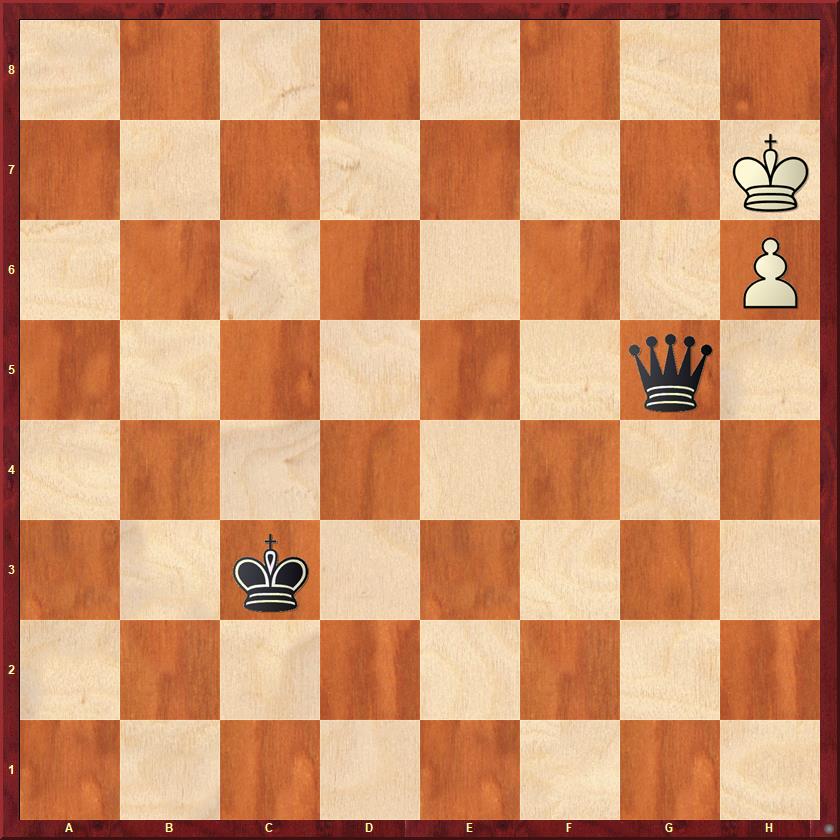 These positions and ideas should be but are mostly not covered in basic endgame manuals. GMs may be surprised, but the solutions to these positions are not obvious to amateurs.
These positions and ideas should be but are mostly not covered in basic endgame manuals. GMs may be surprised, but the solutions to these positions are not obvious to amateurs.
[Note on methodology. I searched Chessbase's Mega database for all games from 2019 to the present which have a queen vs a pawn on the board for five or more moves and then compared the result of the game to the result the tablebase gives for best play when the queen vs pawn endgame appears. When there was a discrepancy between the two, I looked at the games and found the following. Some discrepancies were due to blitz premove blunders or people losing on time. Others were due to totally irrational play by beginners. Most of the rest, were not the result of failures in theoretical positions with pawns on the 7th rank, but rather failures to win when the pawn was on the 6th rank or less.]
No comments:
Post a Comment